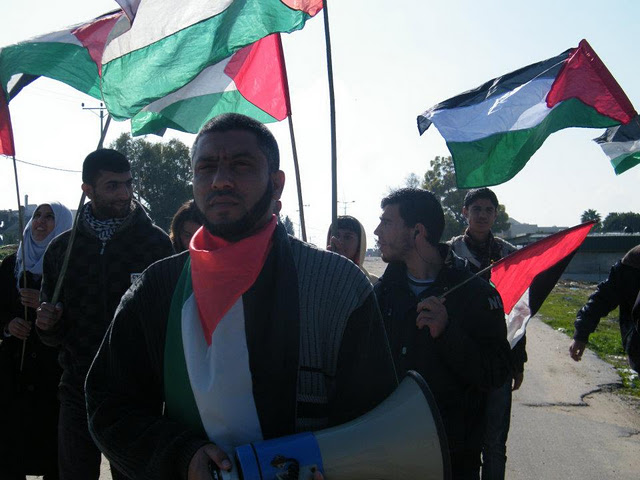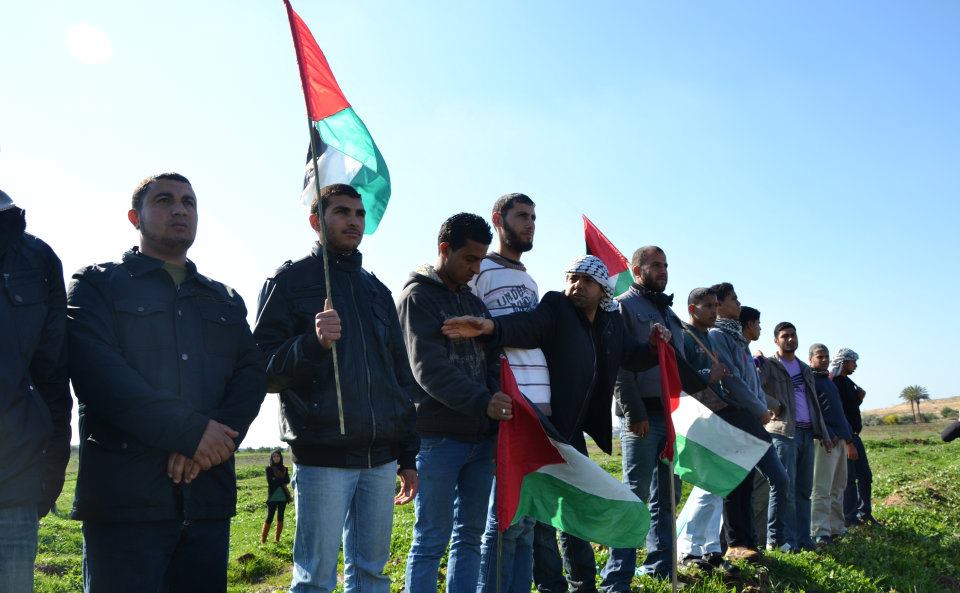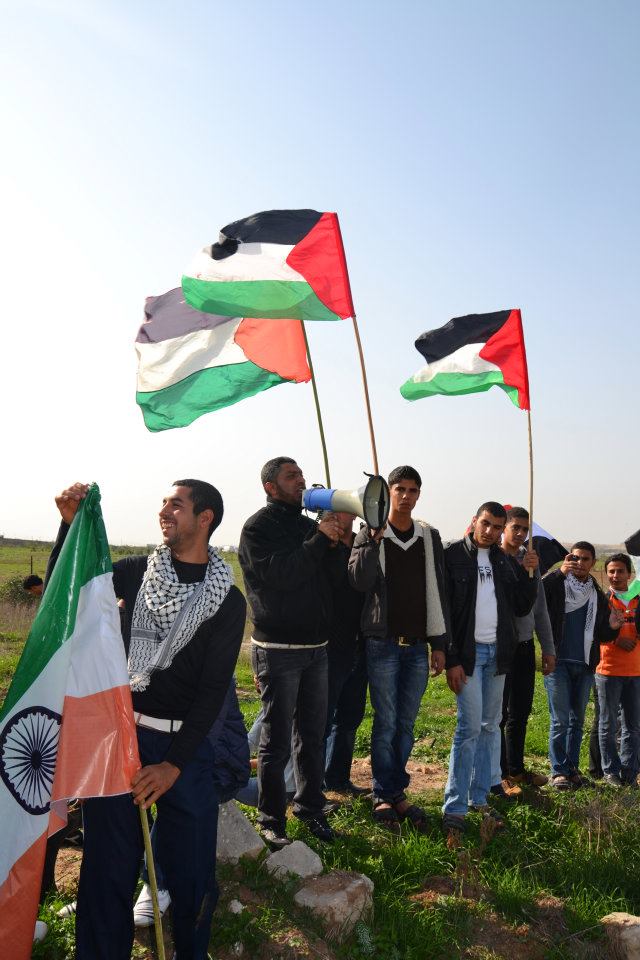Tag: Buffer Zone
-
Beit Hanoun commemorates 3 years since operation ‘Cast Lead’
by Rosa Schiano 7 January 2012 | il blog di Oliva On Tuesday there was another demonstration in Beit Hanoun against the “buffer zone” imposed by the Israeli army in the Gaza Strip. The demonstrators also commemorated the over 1400 Palestinians killed during operation “Cast Lead”. The demonstration started at about 11.00 am. A drone…
-
Demonstration in Beit Hanoun three years after Cast Lead
27 December 2011 | International Solidarity Movement, Gaza The Beit Hanoun Local Initiative remembered the 1,414 Palestinians killed by Israel during its 2008-2009 “Operation Cast Lead” attack on the people of Gaza during a weekly march in the Israel-imposed “no-go zone.”
-
Demonstration in the no go zone, Beit Hanoun
by Nathan Stuckey 20 December 2011 Every Tuesday there is a demonstration against the occupation and the Israeli imposed no go zone that surrounds Gaza, stealing much of Gaza’s best farmland. Today, it was unseasonably warm, it felt almost like summer. We started our march from in front of the destroyed buildings Beit Hanoun Agricultural…



